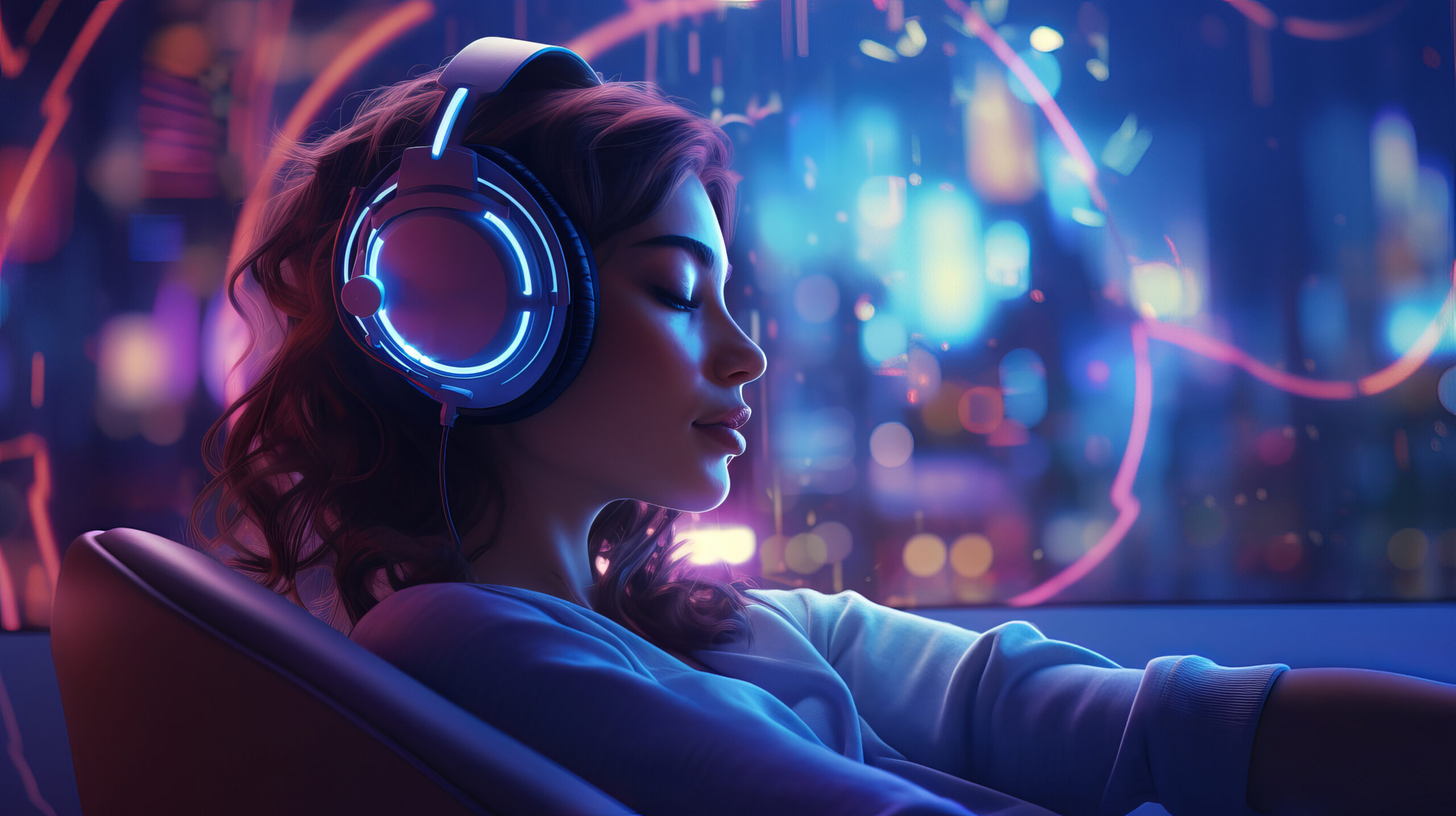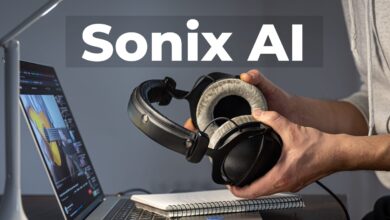
Table of Contents
Visualize Emotions in Music with Artificial Intelligence to elevate your listening experience. Discover how AI detects and visualizes emotions in music, enhancing emotional depth for listeners and artists alike. Learn about the tools, benefits, and future of AI-driven music visualization.
Introduction to Emotions in Music
Music has long been a universal language of emotions, helping us to express, process, and share our feelings without a single word. But what if there was a way to see these emotions, visualized right in front of us? That’s where artificial intelligence (AI) comes in, opening up a world of possibilities for how we experience and interact with music on a deeply emotional level.
The Science Behind Music and Emotion
Music can change our mood instantly boosting our spirits, comforting us, or even helping us tap into complex emotions. Psychologists have spent decades studying why certain melodies, rhythms, and harmonies elicit particular feelings. The emotional effect of music comes from its tempo, pitch, rhythm, and even lyrics. These elements impact our heart rate, brain activity, and even hormones, allowing music to act as a powerful emotional catalyst.
What is Artificial Intelligence (AI)?
Artificial intelligence refers to the ability of computers to mimic human intelligence. AI processes vast amounts of data, recognizes patterns, and even learns and improves over time. By analyzing patterns and associating them with specific emotional outcomes, AI can detect and interpret emotions in ways that can surprise us. In the realm of music, AI can even recognize the emotions a song may evoke in listeners and display them visually.
How AI Can Detect Emotions in Music
AI analyzes audio data using advanced techniques such as machine learning and deep learning. These algorithms identify characteristics of a song like tone, rhythm, and tempo and link them with common emotional responses. For instance, upbeat tempos may be associated with joy, while slow rhythms often suggest sadness. By “listening” to music in a way similar to how a person might, AI can determine which emotions are most likely to be felt by the listener.
Why Visualizing Emotions in Music Matters
Imagine listening to a song and seeing the emotions it evokes in a dynamic, colorful visual. For music lovers, this adds an extra layer to their listening experience, making it feel immersive and multidimensional. Musicians can gain insights into how their music impacts their audience emotionally, while listeners can explore new depths of their own reactions to the music they enjoy.
AI Tools for Visualizing Emotions in Music
Several AI platforms have emerged to help visualize emotions in music. Tools like AIVA, Melodrive, and Google’s Magenta allow artists and listeners to see and feel the mood conveyed in a piece of music. These tools use emotion-recognition algorithms to generate visual feedback in real-time, transforming the music-listening experience.
The Role of Data in Emotion Visualization
Data is the backbone of AI emotion analysis. By processing audio samples from diverse sources, AI systems gather data on how people react to specific music patterns. This data is then categorized into emotions, creating a database that helps AI algorithms predict and visualize emotions in new pieces of music with remarkable accuracy.
Understanding Emotion Recognition Models
Emotion recognition models, such as convolutional neural networks (CNN) and recurrent neural networks (RNN), play a pivotal role in analyzing music’s emotional content. These models analyze sound waves and other music characteristics to interpret mood shifts and emotional tones accurately. By assigning labels to these emotional elements, AI can output visual representations that correspond with the intended emotional message of the music.
AI and Music Composition Based on Emotions
Interestingly, AI doesn’t only visualize emotions in existing music; it also composes music with specific emotions in mind. Platforms like Amper Music use AI to compose music based on a specified mood, creating tracks that are custom-made to evoke happiness, sadness, excitement, or calm. This makes AI an exciting partner for composers who want to create emotional journeys for listeners.
Applications of Emotion Visualization in Music Industry
From personalized music recommendations to targeted therapy, AI-driven emotion visualization has vast applications in the music industry. Streaming services can suggest songs based on a listener’s current mood, creating an emotional feedback loop. In music therapy, visualizing emotions allows therapists to better understand and adjust the musical experience to suit the client’s needs, providing a customized healing experience.
Benefits of Using AI in Music Emotion Visualization
Emotion visualization through AI brings many benefits, from enhancing the listener’s experience to helping artists understand the impact of their work. For listeners, seeing emotions makes music feel more alive and personal. For artists, AI can offer feedback on how audiences may respond emotionally to their work, helping them to create more powerful and resonant music.

Challenges in Emotion Visualization through AI
Despite its benefits, AI’s role in emotion recognition isn’t without challenges. Music and emotions are both complex, nuanced experiences that can be hard to analyze accurately. There’s also the ethical question of AI interpreting and possibly influencing our emotional states. Ensuring that AI remains a tool for enhancement rather than control is an ongoing consideration in this field.
Future of Emotion Visualization in Music with AI
With advances in AI, we can expect even more immersive experiences in music. Future technology could allow listeners to feel as though they’re “inside” the music, experiencing an emotional journey that aligns perfectly with the artist’s intent. We may even see personalized emotional responses where AI adjusts visualizations based on individual listener profiles, making the experience unique for each person.
The Impact of AI on Music Lovers and Musicians
For listeners, emotion visualization could transform music from a passive experience into an interactive one, offering a new way to connect with favorite songs. Musicians, too, may find this technology liberating, as it offers them deeper insights into how audiences feel and engage with their music. This could lead to even more emotionally nuanced creations in the future.
Conclusion Of Visualize Emotions in Music with Artificial Intelligence:
Artificial intelligence has opened up a new dimension in the world of music, allowing us to see and feel emotions like never before. As AI continues to advance, its ability to visualize emotions will bring music closer to us, making each song a unique emotional journey. Whether you’re a listener wanting a richer experience or an artist aiming to understand your audience, AI-driven emotion visualization is set to change the way we experience music forever.
For more information, visit techpass.ai.
FAQs About Visualize Emotions in Music with Artificial Intelligence;
1. What is AI-driven emotion visualization in music?
AI-driven emotion visualization is the use of artificial intelligence to detect and display the emotions a song may evoke visually, adding a deeper dimension to the music experience.
2. Can AI accurately read and visualize emotions in music?
Yes, AI can analyze audio features and use algorithms to identify emotions. However, its accuracy depends on the quality of data and the sophistication of the algorithms used.
3. How does emotion visualization enhance the listening experience?
Emotion visualization allows listeners to “see” the mood and tone of a song, making it a more immersive and personalized experience.
4. What are some AI tools for music emotion visualization?
Popular tools include AIVA, Melodrive, and Google’s Magenta, which provide visual feedback and emotional analysis of music.
5. Is AI changing the way we experience music?
Absolutely. AI is making music more interactive, allowing listeners to experience it on an emotional level like never before, and giving artists new ways to connect with their audiences.
If you found our content “Visualize Emotions in Music with Artificial Intelligence” helpful don’t forget to share it on your social media: Twitter



